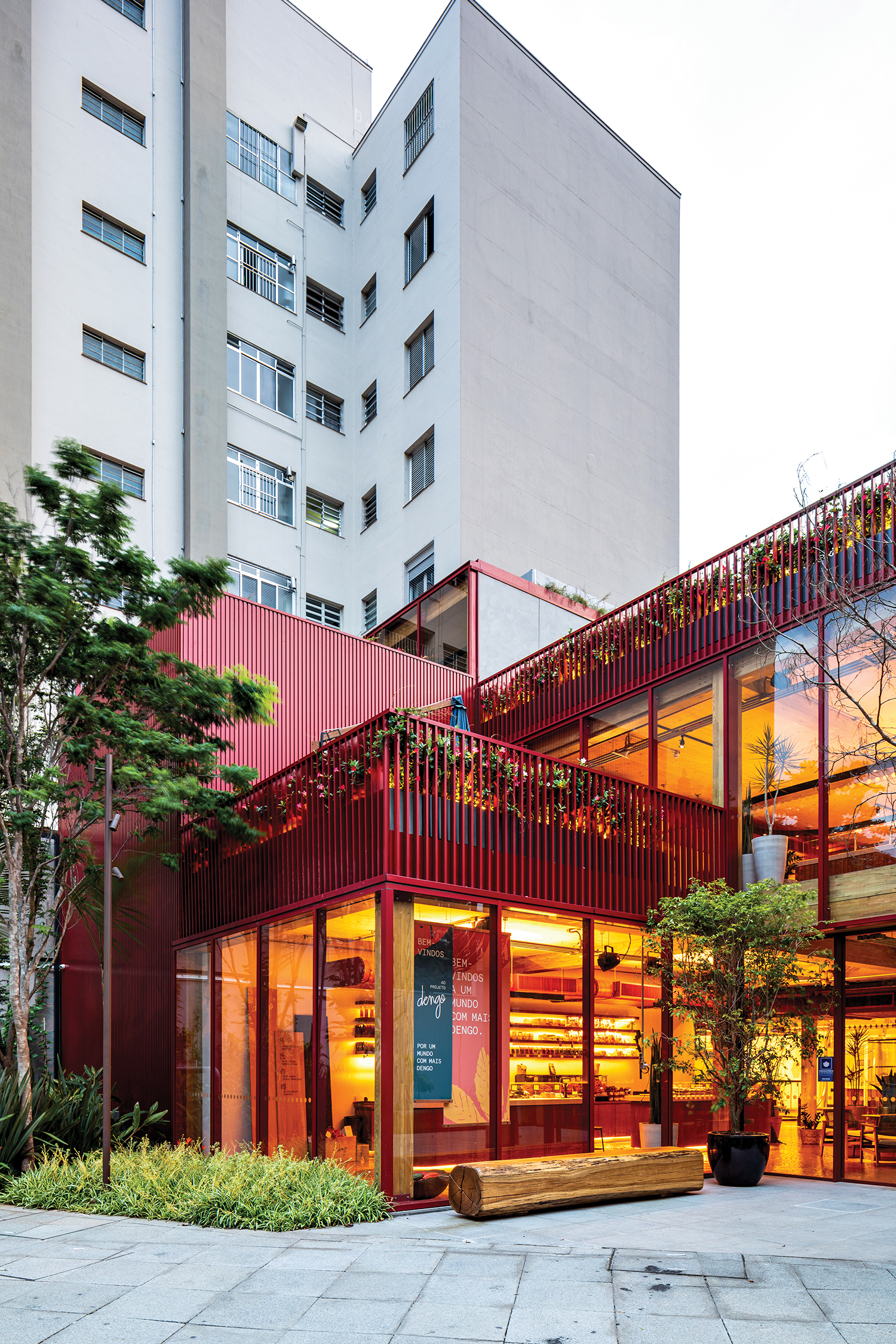
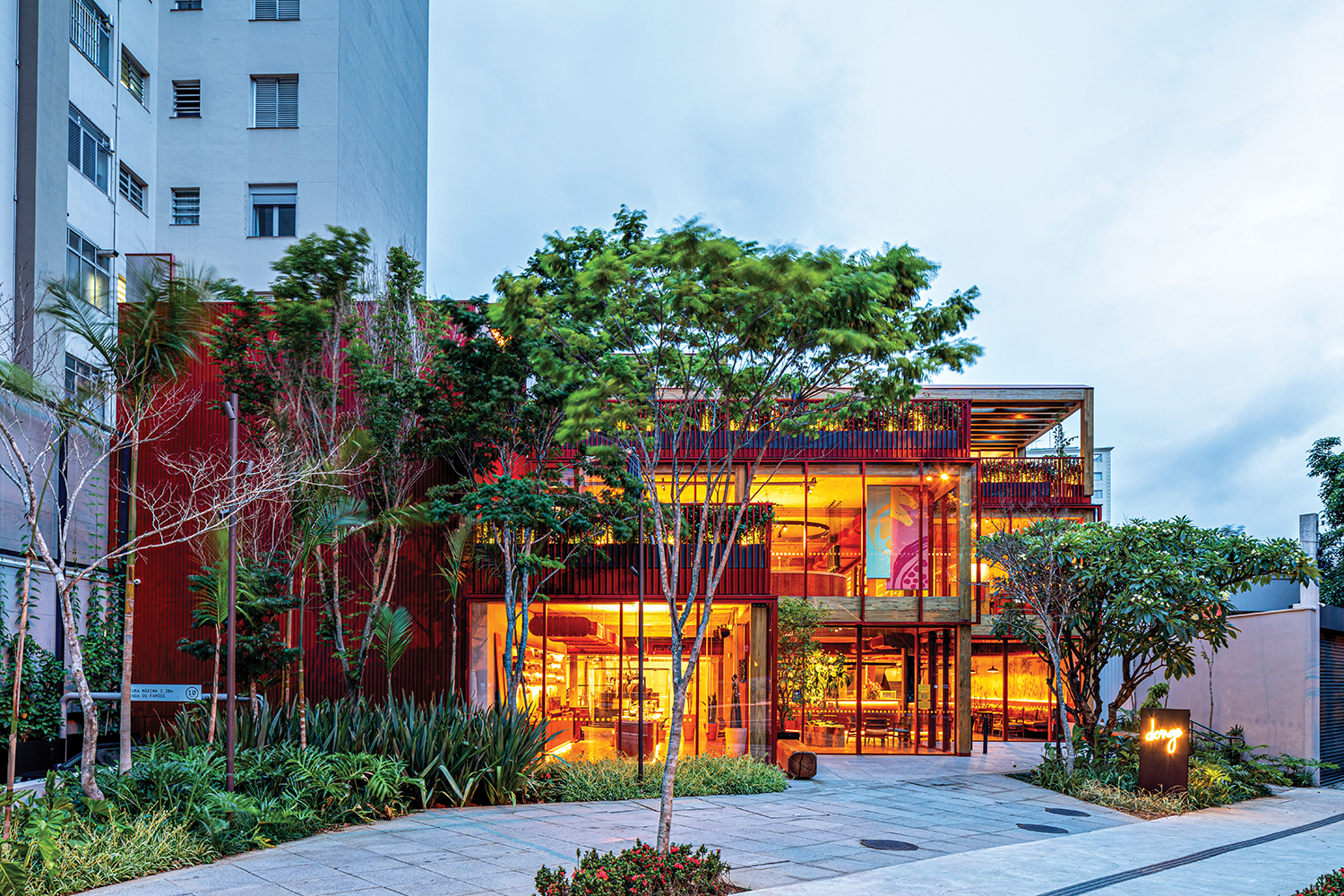
Matheus Farah e Manoel Maia Arquitetura designs the first mass timber building in Brazil for Dengo Chocolates 4-story concept store kicks off a new era of sustainable tall buildings in the country The firm Matheus Farah e Manoel Maia Arquitetura(MFMM) is responsible for the first and tallest wooden building in Brazil, located at Avenida Faria Lima, in São Paulo. Designed to host the concept store of the premium chocolate brand Dengo, the building has four floors and was entirely structured in wood-an unprecedented feat for the Brazilian architecture and construction industry. The project was built with the engineered wood CLT(Cross Laminated Timber). CLT are certified wood panels that, after factory production, are ready for construction on site. Thus, it is possible to reduce project costs and time duration, avoid waste generation in the assembly process and create cleaner and more sustainable buildings.
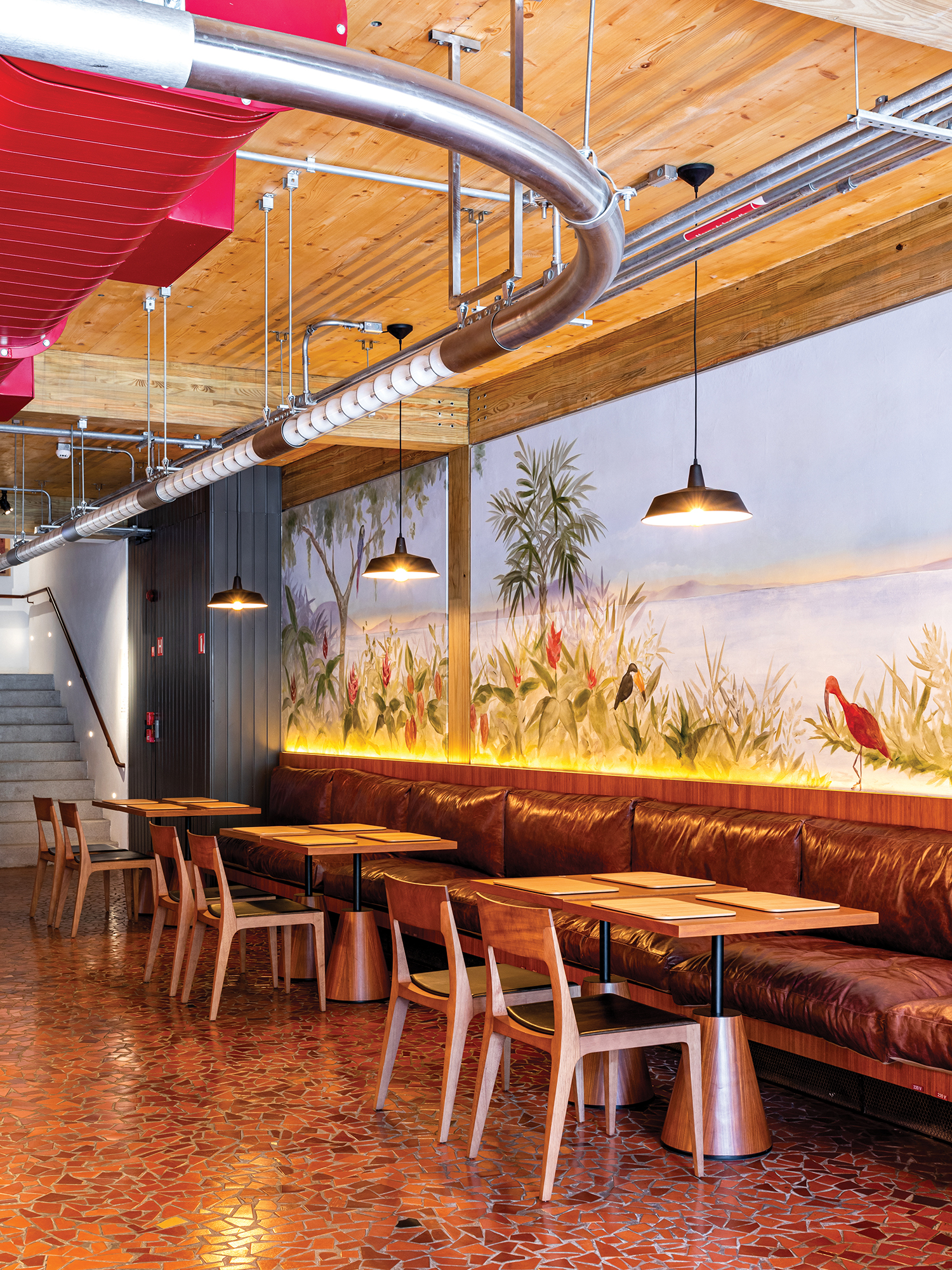
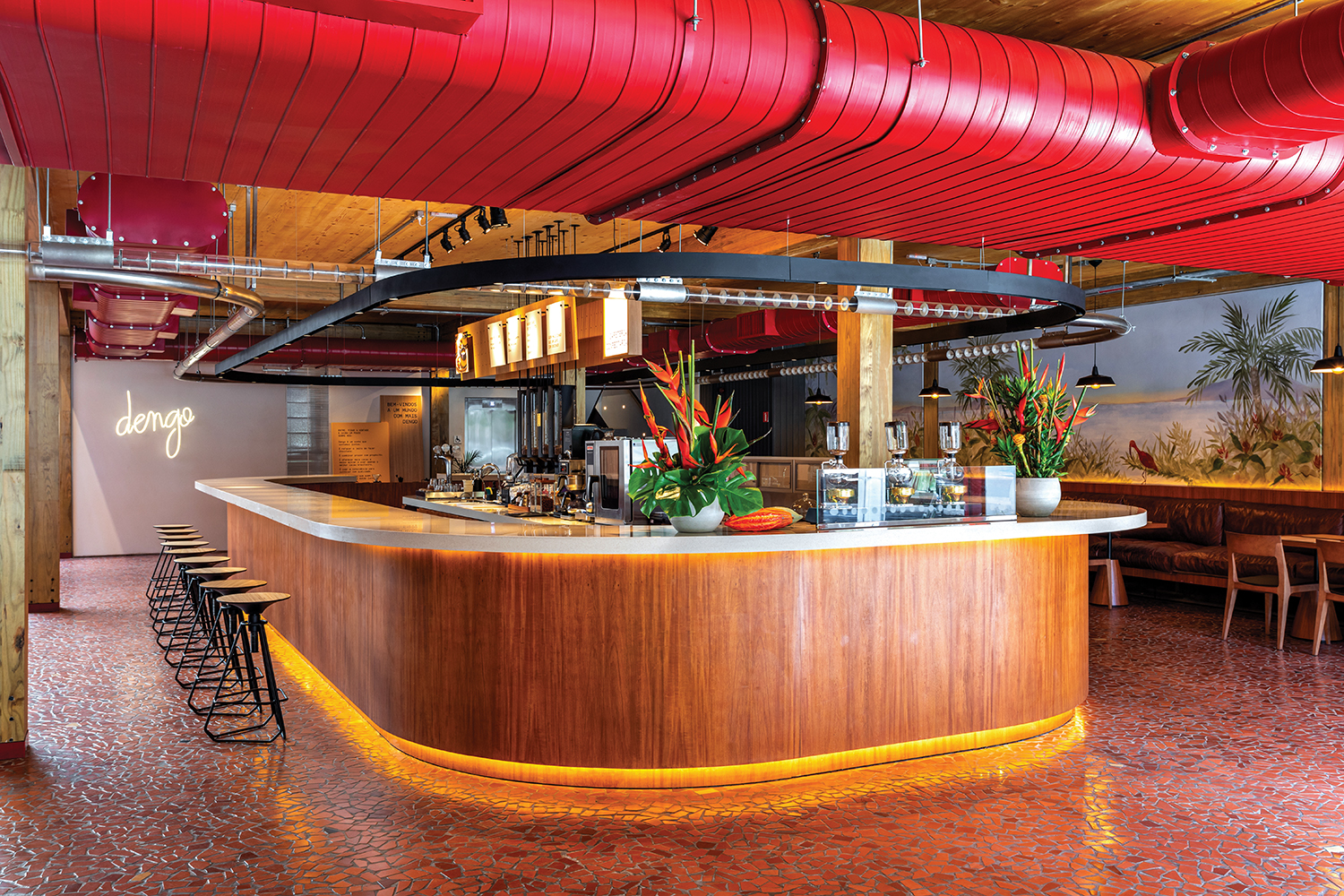
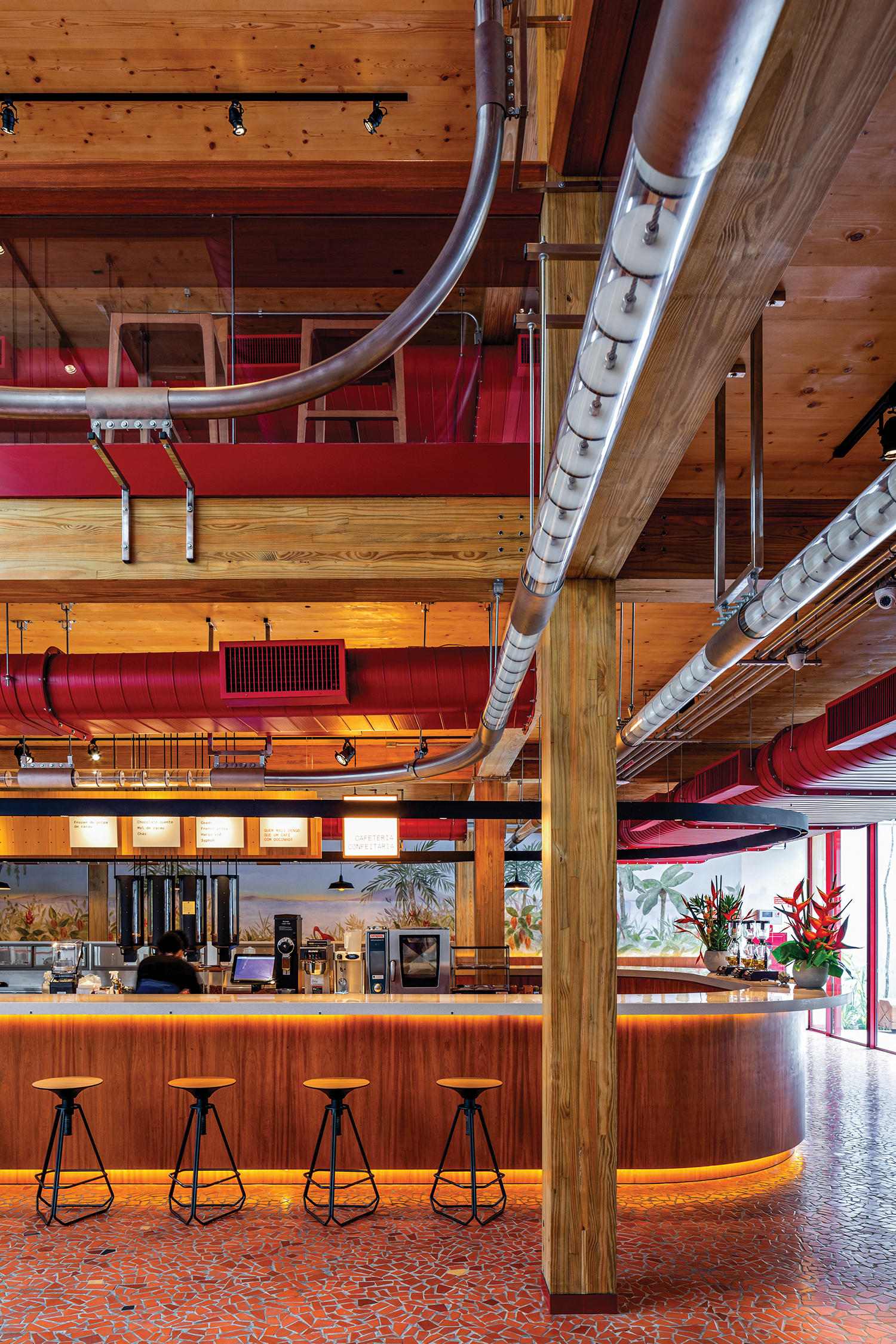
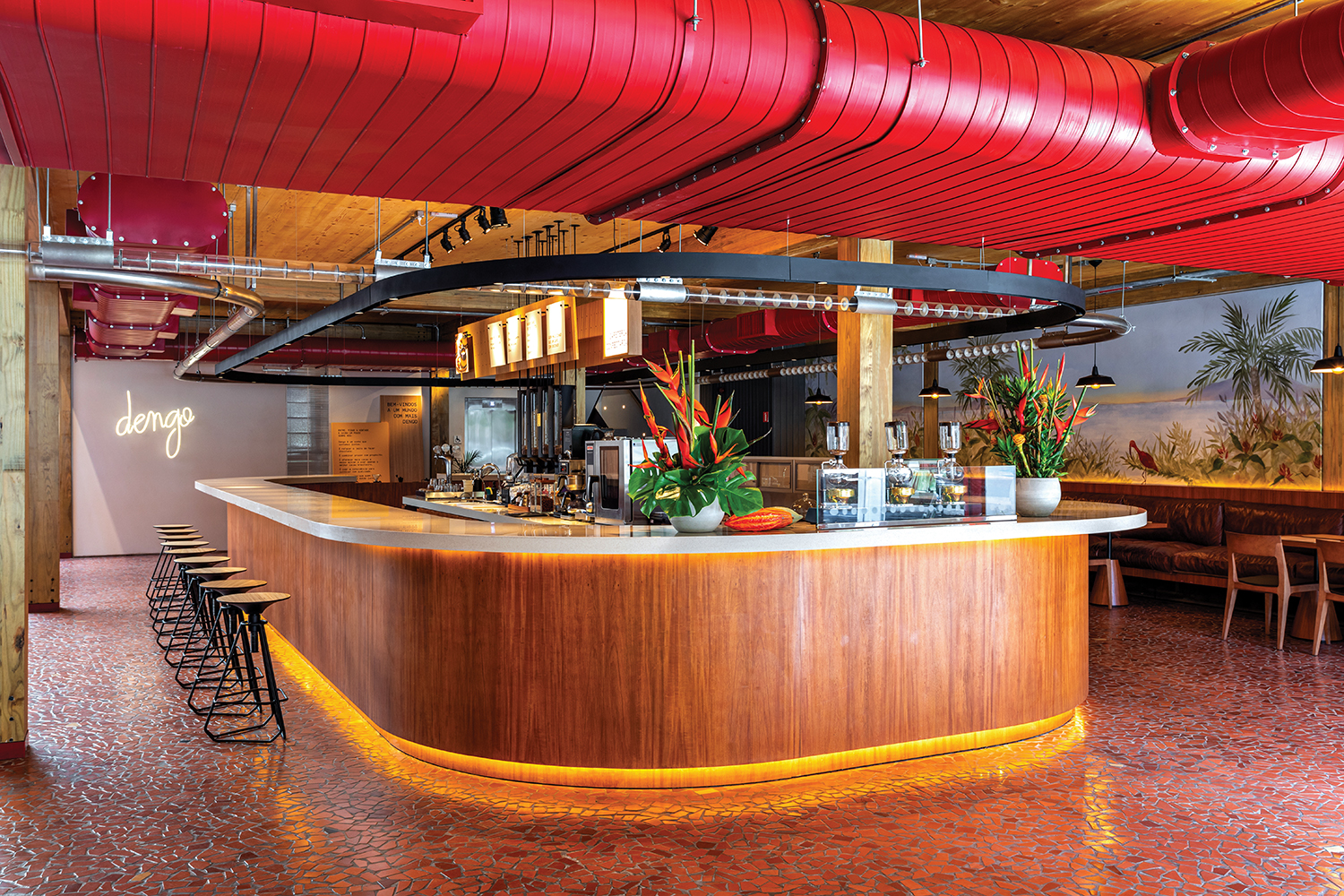
강렬한 레드 컬러로 뒤덮인 건축물은 초콜릿 공장을 매력적인 방식으로 재창조한 작품이다. 초콜릿 브랜드 '뎅고(Dengo)'만의 차별성을 강조하고자, 스튜디오는 비비드한 컬러링과 흥미로운 내부 인테리어로 프로젝트를 설계했다. Dengo Chocolates Concept Store(뎅고 초콜릿 콘셉트 스토어)는 카카오 빈을 생산하고 초콜릿 바가 완성되는 전 단계를 일컫는 'Bean to Bar(빈 투 바)' 공정의 모든 단계를 통제할 수 있는 요소들을 갖췄다. 1940년식의 초콜릿 정제 과정을 보여주기 위해 복원된 기계를 지상 1층에 설치하고, 여기에 중앙 심방을 투과하는 투명한 덕트를 마련, 제조 단계에 대한 관심을 증폭했다.


Dengo's concept store occupies a 800 square meters plot with 1,500 square meters of building area. The front garden occupies a stretch of the 5 meter-setback, and is connected to the street through a walkway crossing, which expands the sidewalk. The volumetry is composed of hollow wooden cubes that both verticalize the building and convey the idea of permeability and movement; this is possible through some strategic subtractions at different spots on the facade.
1층에 위치한 므 덩고 스테이션(Meu Dengo station)은 고객 누구나 맞춤 관람을 즐길 수 있도록 자유롭게 구성했다. 바닥재는 상파울루의 전형적인 붉은 세라믹 카퀴노(caquinhos) 전통 양식을 떠올리게 하며, 노출된 목재 구조는 편안함과 생동감을 높이고 뎅고의 핵심 가치들을 설명한다. 건축가 마테우스 파라는 자연적 요소의 사용과 브라질스러움을 현대적인 재해석에 기초해 강화했다고 덧붙였다.
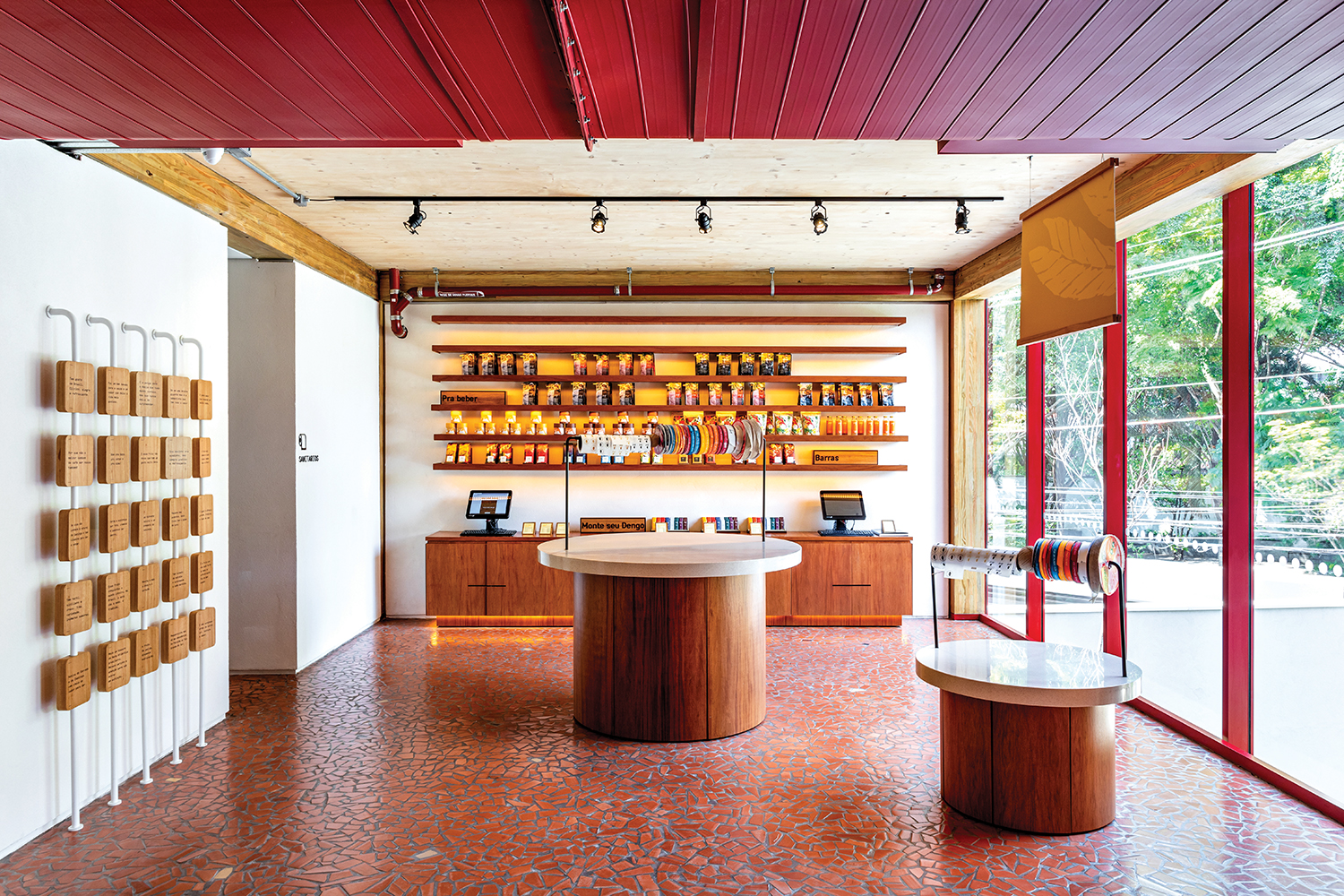
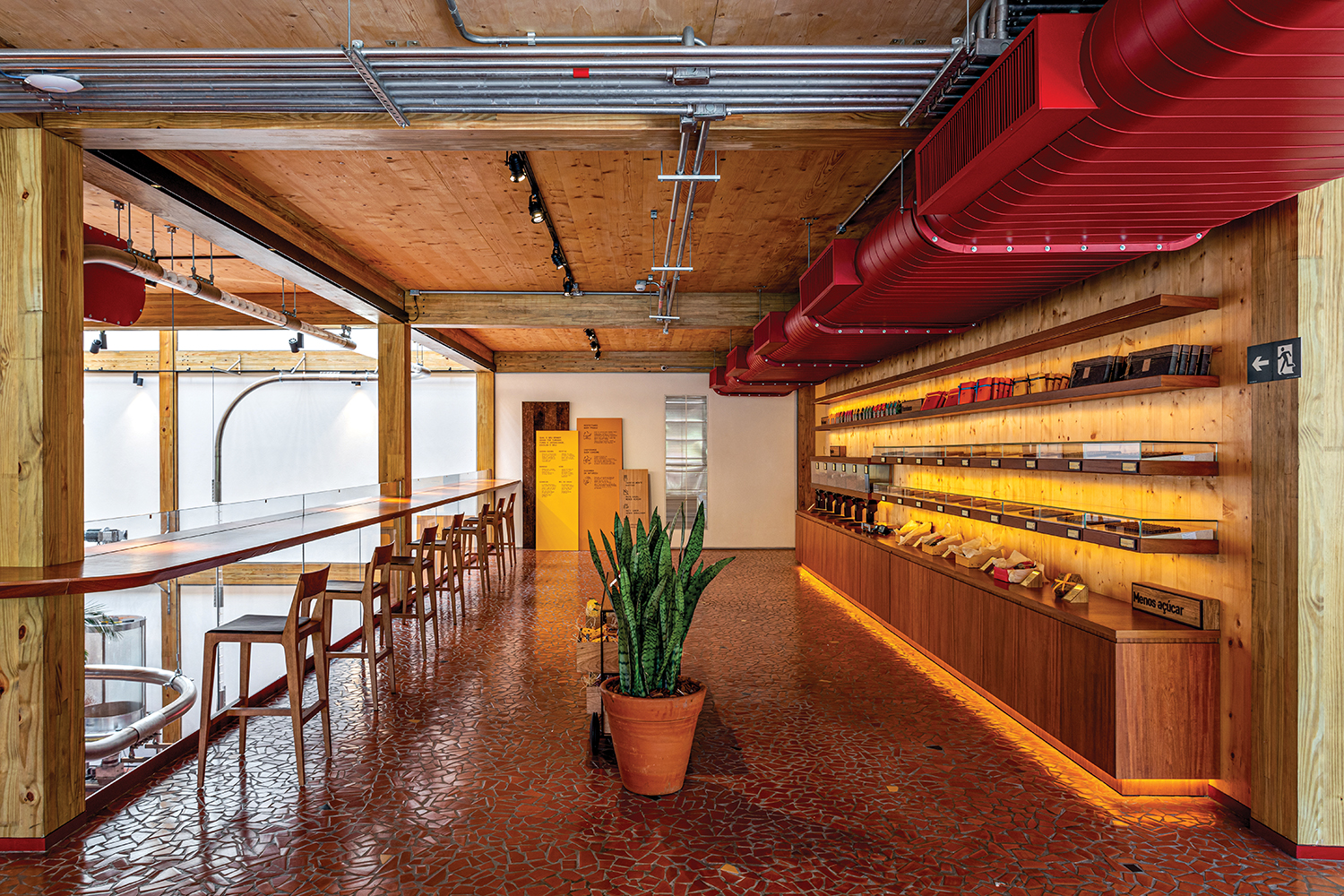
The exposed wood structure and the vegetation composition contribute to a feeling of comfort and liveliness, and also rescue Dengo's core values of producing in harmony with the environment. Transparencies and openings, as well as earthy tones, natural lighting and ventilation and wooden surfaces accentuate these characteristics. The interior was also designed by the office. The flooring brings back the red ceramic 'caquinhos' tradition(broken shards), typical of São Paulo residences from the 1940s and 1950s; they were found in 'tile cemeteries' and were used to compose the ambience. Besides paying homage to the city and evoking an affective memory, it also refers to the famous 'quebraquebra' brand product: chocolate boards inside glass niches that are broken into as many pieces as the customer orders.

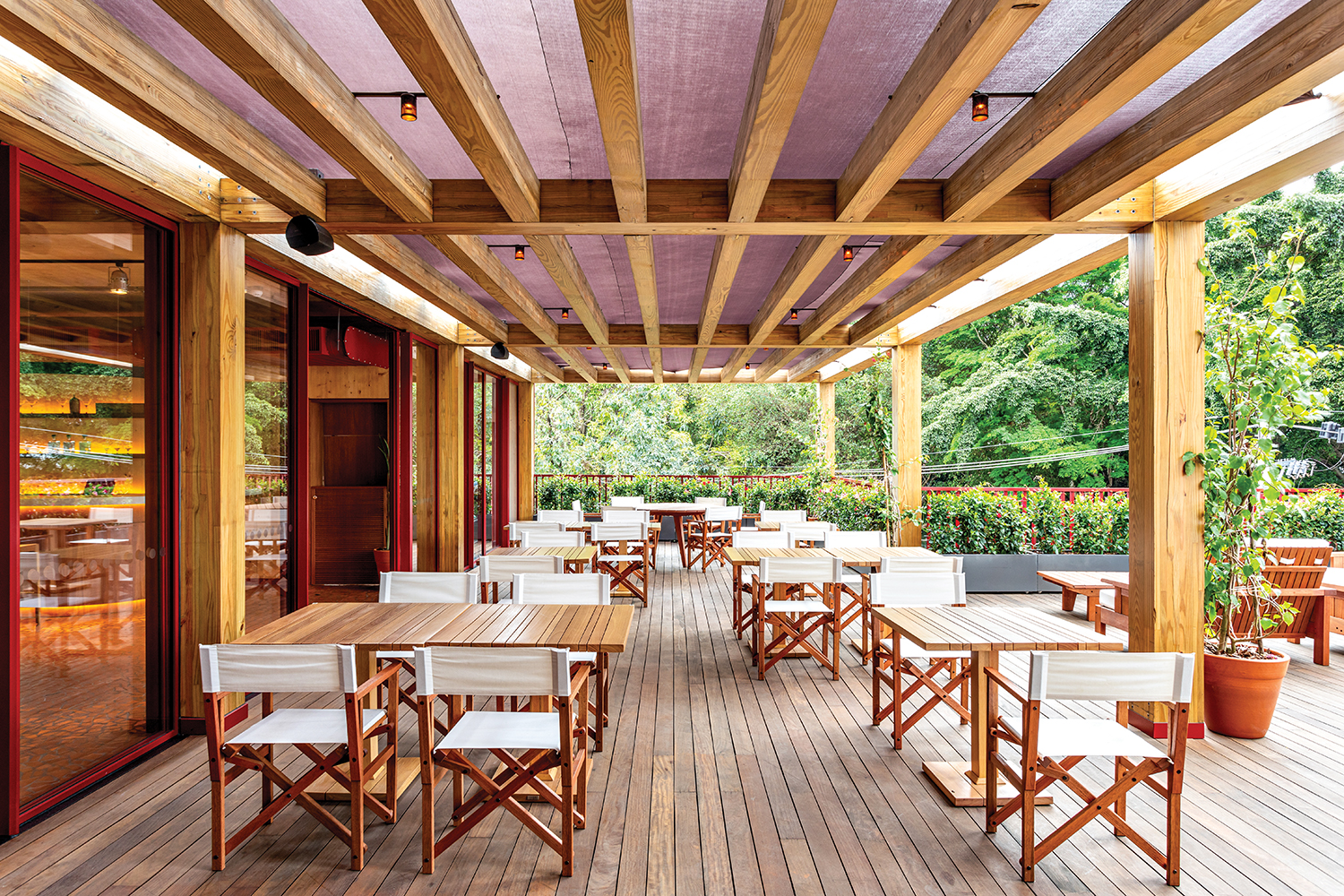
1층과 2층에는 방문객들을 수용할 수 있는 넉넉한 숫자의 테이블과 벤치가 마련됐다. 녹색 자연을 조망할 수 있는 실내·외 좌석은 자연 채광을 마음껏 누릴 수 있도록 개방된 구조다. 이곳의 우드 테이블과 체어, 나무로 만들어진 벽은 금속과 시멘트 사용을 지양하고, 자연친화적인 건축물을 세우고자 한 스튜디오의 노력이 엿보인다. 프로젝트 전반에 사용된 목재는 토목 건설에 종사하는 건축가들 사이에서 엄선된 재료로 알려졌다. 디자이너 마노엘 마이아는 미학과 편안함을 잃지 않되, 환경 피해를 최대한 줄이는 프로젝트를 완성하고 싶었다. 이어 현장에서 시공 준비를 마친 목재 패널을 사용함으로써 전체 비용과 공사기간을 절약할 수 있었다며 만족감을 드러냈다.











0개의 댓글
댓글 정렬